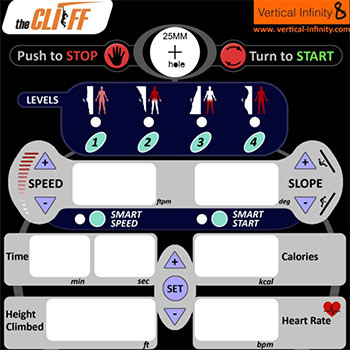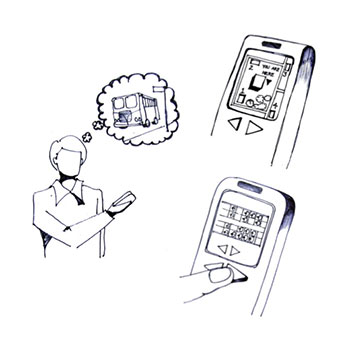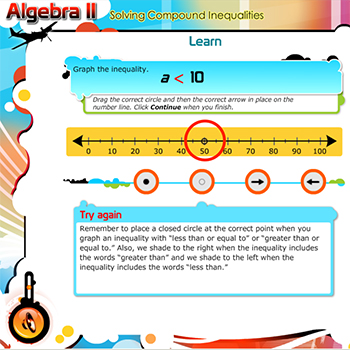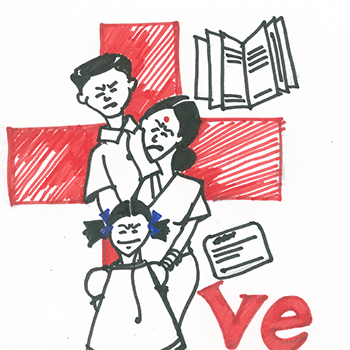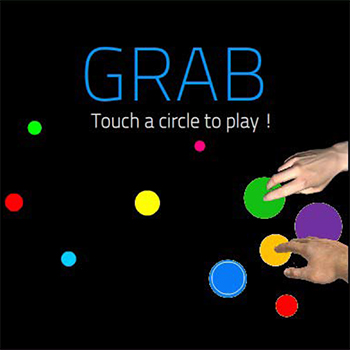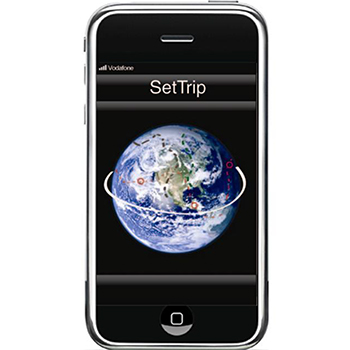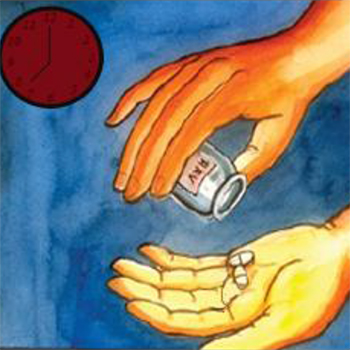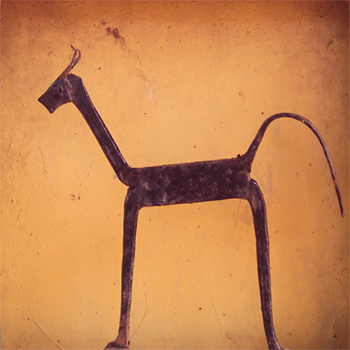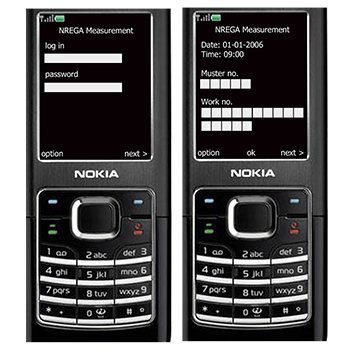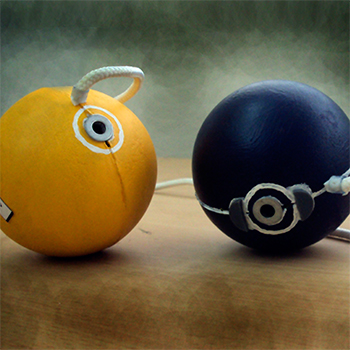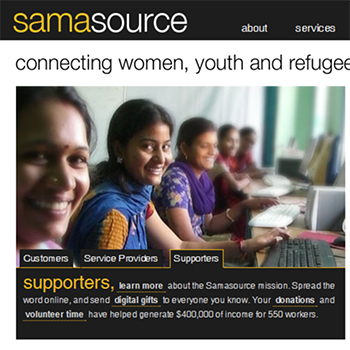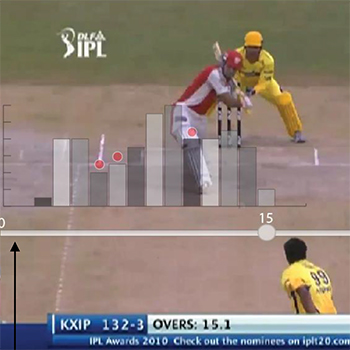Interaction Design
Batch 2008-2010
(23 items)
Interaction DesignBatch 2008-2010
(23 items)
(23 items)
Summer Internship at Samsung Design Delhi
by Ajay Mittal
by Ajay Mittal
‘Learning always begins at home’, so it won’t be wrong to say that during my last one year in IDC, I got a pretty clear understanding upon the kind of work i would like to involve myself in and was therefore looking for an opportunity to experiment with the same. Choosing Samsung Design Delhi (SDD), for my internship was moving one step ahead in this learning process, as i wanted to see the practical implementation of the design process and to use my understanding of the same to generate something of high potential. At SDD, the opportunity to design “Mobile Applications For Indian Youth in 2010’ helped me in developing my own understanding and skills within a given time constraint. The whole project was a kind of different learning experience, ranging from primary and secondary research, conceptualization, ideation, user inputs and iteration. Also, I learned the intricacies of the corporate environment, as there were always a deadline to take care of within a given time constraint but the open atmosphere and time to time group discussions and inputs from the highly qualified and learned design team never lead the design ideas to supress or go waste. For me, Design is about exploring and experimenting. The more we explore and experiment, better the design is. SDD not only helped me in developing my design thinking but also exposed me to the new range of possibilities and opportunities a designer can get into.
Details >>System Design For Teach For India
by Ajay Mittal
by Ajay Mittal
Complexity of a system involves in the multiple loops which bind the entire system together. Often a complex system takes a longer duration for a user to get a hold of it, which results in errors and time consumption. When it comes to looking for a system design for a bigger organization, where multiple players are involved in the process and each one is assigned a different role to be played, the entire process becomes multi fold, and therefore it becomes essential to understand the complexity involved at each stage, and in order to create a larger impact, it is also necessary to understand the need of creating a system in first place and also the problems which it would cater to. Understanding which, would help in finding the right solution to the problem. The model of Teach for India is a threefold process wherein major role is played by the facilitators of the organization, followed by the teachers and the students. Role of each player differs from other in some or the other way and therefore coming up with a system design, which caters to everyone’s requirements and providing them with relevant information. It also requires understanding of the interconnections and links within the system. The project aims at understanding the need gaps in the existing manual process and coming out with a new system design to facilitate the networking between the three major players i.e. The facilitators, teachers and students involved with ‘Teach For India’ foundation. As the entire system is currently being done manually, the project also aims at creating a new online system which could reduce the extra amount of work done in a manual process and also providing the right information at the right time along with making access to the required information and validating and authenticating it at the same time reducing the chances of flaws in the process.
Details >>Communication and Information Sharing For Elderly
by Ajay Mittal
by Ajay Mittal
Information and communication technology have not only affected the younger generation, but they are also pervading and finding their way into the lives of the elderly. With the growth of mobile phones, the World Wide Web, and other various modes of connecting people, the face of communication is changing at a rapid pace. The development of communication technologies has caused an enormous social change. Mobile phones are currently one of the biggest modes of communication between people as they target a larger audience, but when it comes to the elderly, this is where it fails to connect as the needs and requirements of the elderly are different from all other age groups, which needs to be considered separately during the design process. Designing for the elderly requires a "human-centered approach" as it is more important to discuss and debate about the technology and design with the people who are going to use them. The project is an attempt to create an alternative means of communication and information sharing for the elderly, keeping in mind the physical and technological constraints. We are designing a wearable device for the elderly to carry whenever and wherever they feel like it, with all the basic essential features required for communication and information sharing. For example, sharing of songs and pictures, emergency calling, and tracking systems to keep track of family and friends. To overcome the problem of sight and hearing, which comes with increasing age, audio-visual feedback at every step while performing a function and icons for easy mapping and navigation have been implemented in the design. Also, metaphors for the interface are taken from the already existing mental models of elderly people so that they don’t find it difficult to adapt to the new interface.
Details >>The CLIFF Front Panel, Evaluation and Redesign
by Aniket Sarangdhar
by Aniket Sarangdhar
Vertical Infinity is a company formed for the research and development of new breed of Fitness equipments called Adventure Fitness Equipments. Started by Mr. Vinal Savla, an alumnus of IIT Bombay (EE' 2005), Vertical Infinity has been in touch with various IDC Faculty and students from its very conception. The Project circulates around its first product, which clubs the activity of Adventure Rock Climbing with Fitness into a machine ? the CLIFF, a first of its kind in India. About the CLIFF: The CLIFF is a Motorized Rock Climbing wall which simulates rock climbing up?to thousands of feet, hundreds of minutes and burns tons of calories & triggers motion in almost all the body muscles, making all this possible at any indoor location. The CLIFF requires an indoor area of just about 50 sq. ft. and a height of 10.5', yet offers infinite climbing space. Project brief is to redesign the current front panel’s Graphics and human interface flow without any addition of hardware or change in position of hardware, redesign the front panel’s Graphics and human interface flow with minimal hardware changes and add new features and : Conceptualize from scratch a new versatile feature?rich cost?effective human interface for the CLIFF.
Details >>Information System for B. E. S. T. Commuters
by Aniket Sarangdhar
by Aniket Sarangdhar
In this project, an information system is designed for commuters of Brihanmumbai Electric Supply and Transport undertaking (BEST) which provides bus service in Mumbai city. In the process, the current information system of BEST was studied. Also, information system of bus services of different cities was studied to understand new transit technologies. Several regular and non-regular commuters were observed and interviewed and hours of observations were done at different bus stops and in buses to identify their needs and problems. Also, a new pattern of commuting amongst the commuters in the city is identified. On the basis of these background studies, a mobile phone based information system along with indicators at bus stops and inside buses, a telephone helpline service and a website is proposed. Using this solution, users could plan their journey by knowing information of the nearest bus stops or any bus stop; bus routes, fares, arrival time and crowd in the buses arriving at any bus stop. Users could get this dynamic information; anywhere and at any time during the journey. This information would equip the users to get all the needed information, before beginning the journey, enabling them to arrive at the bus stop just in time to catch the bus. The design would cater, both regular as well non-regular commuters, by providing the necessary real time data at every stage of the journey.
Details >>Summer Internship @ LearningMate Heuristic Evaluation of K12 Courses
by Kirti Kanitkar
by Kirti Kanitkar
LearningMate is a company that started around 8 years back, a brain child of alumni of Industrial Design Centre, who are passionate about contributing the field of education. Currently almost all the work that is being done is of education content designing and creation. A fresh and young Design team is the biggest strength. The team's designers are very dynamic, and each one is highly competent and multitasker. There are various other teams working in the office too, like Content writers, Flash programers, Management group etc. each contributing there share to come up with the best output. Education in the United States is provided mainly by government, with control and funding coming from three levels: federal, state, and local. School attendance is mandatory and nearly universal at the primary and secondary levels (known inside the United States as the elementary and high schools levels). At these levels, school curricula, funding, teaching, and other policies are set through locally elected school boards with jurisdiction over school districts. School districts are usually separate from other local jurisdictions, with independent officials and budgets. State governments usually make educational standards and standardized testing decisions. Attending public schools, state) certified private schools, or an approved home school program can generally satisfy compulsory education requirements.
Details >>System Design for Virtual Adoption
by Kirti Kanitkar
by Kirti Kanitkar
The rapid growth of the adoption process facilitates designing better interactions between the parents and children through communication and interaction. The parents are unaware of whom to approach and seek help from when the adoption process is concerned. They seek help from experienced people, and so this system design helps them to gather correct information in one place and approach their prospective kid in the most appropriate manner. The project mainly focuses on the adoption process that is carried out in the orphanages, and helps them regulate and work in the best possible manner and efficiently by providing various other necessary factors that are important in the adoption process. The report describes the design of a new automated system that would facilitate better pathways for parents to approach their kids. The project went through cycles of design, prototyping, and user evaluation. The method facilitates improved interactions and also presents the information that is important to the parents in the best possible way.
Details >>Information Management system to support HIV patients & Doctors
by Kirti Kanitkar
by Kirti Kanitkar
The rapid growth of the adoption process facilitates designing better interactions between the parents and children through communication and interaction. The parents are unaware of whom to approach and seek help from when the adoption process is concerned. They seek help from experienced people, and so this system design helps them to gather correct information in one place and approach their prospective kid in the most appropriate manner. The project mainly focuses on the adoption process that is carried out in the orphanages, and helps them regulate and work in the best possible manner and efficiently by providing various other necessary factors that are important in the adoption process. The report describes the design of a new automated system that would facilitate better pathways for parents to approach their kids. The project went through cycles of design, prototyping, and user evaluation. The method facilitates improved interactions and also presents the information that is important to the parents in the best possible way.
Details >>User Studies for Designing ‘Visitor Experience’ in Museums
by Mandar N. Sarnaik
by Mandar N. Sarnaik
This internship project work is a part of C-DAC’s on-going project on "Interactive Kiosks in the Chhatrapati Shivaji Maharaj Museum, Mumbai (formerly known as the Prince of Wales Museum). The project aims to install interactive kiosks in various galleries of the museum to provide a better experience for the visitors. To start with the project, a study of the visitors and the various aspects related to viewing artefacts in a museum was conducted to get design directions and understand the visitor expectations and problems. The study included visitor interviews (contextual inquiry), visitor feedback through questionnaires, and observation of visitor behaviour. The findings of the study have been presented as insights, design ideas, and recommendations. The study was conducted mainly at the Raja Dinkar Kelkar Museum, Pune, since the project office and resources are located in Pune. The findings are of a general nature; they can be considered to hold true in any general museum environment. The findings of the study are now useful in designing the content and interactions of the kiosk. Based on the available insights, the basic information architecture for the kiosk has been proposed with design recommendations, and the nature of applications therein has been thought over.
Details >>Supporting ‘Learning to Sing’
by Mandar N. Sarnaik
by Mandar N. Sarnaik
Hindustani Classical is a great style of singing and has been codified to extreme detail and is a science and art in itself. This project aims at supporting the process of learning to sing (Hindustani Classical vocals) in cases where the students do not get to spend more time with the Guru. The long gaps between classes and the lack of personal guidance during individual singing practise are major problems. By processing an individual’s singing using digital signal processing, feedback can be given on the pitch, timing, and energy of singing. These parameters are the digital counterparts of Swar (notes), Taal and Laya (beats and rhythm), etc. terms in classical singing, respectively. Design challenges like the acceptance and application of such an idea in the lives of the Guru and the students, an interface, and ways to give feedback have been attempted in this project. Through a combined effect of audio, text notations and real-time data visualisation, an attempt has been made to help a user understand the nuances of their own singing, which when juxtaposed against a reference can help a great deal in correction by comparison. The project also aims to help potentially good singers and aspirants who have never been to a class to discover and appreciate classical singing and, probably in the future, join a class.
Details >>Multiplayer Interactive Game on a Multi-touch Surface
by Mandar N. Sarnaik
by Mandar N. Sarnaik
Computer games take us to a world full of fun, fantasy, and engaging experiences. Computing power, coupled with beautiful animations, huge life-like landscapes open for exploration, and sounds, make these games addictive. Players play such games for long hours. This project started with the idea of making such rich, experiential games. User studies were done to understand computer games and players’ attitudes and responses. Future trends in gaming were also studied. It became clear that rich visuals and sound designs, which are "time and skilled resource’ intensive tasks, can convert simple activities into rich and engaging experiences. However, it was realised that the fun and social bonding that board games deliver was missing in computer games as well. It was hence decided to combine the advantages of board games and computer games. The proposed game, "GRAB," is a multiplayer computer game to be played on a multi-touch surface. The game will incorporate the feel of a board game and facilitate player-player and player-spectator interactions. The computing power and interactivity of computer games are employed to provide engagement and fun. The novelty of the multi-touch hardware and a natural way of interacting with the game will be an attractive factor for players. The game aims at improving hand-eye coordination, reflexes and boosting quick decision-making. The game can find a place in public places like malls, resorts, clubs, schools, etc. The game activity is intuitive enough to encourage learning the game by seeing other players playing. Several concepts for converting this game into educational and learning games have also been ideated.
Details >>Summer Internship at LearningMate
by Priyanka Irle
by Priyanka Irle
LearningMate is a leading provider of end-to-end online learning solutions to the education industry. They help client organizations implement strategic initiatives related to the creation, management and delivery of high-value interactive learning content. A team of experienced professionals including instructional designers, project managers, content specialists, graphic designers, creative visualizers, programmers, and quality control specialist’s work together to deliver relevant, robust solutions at a price point significantly lower than industry benchmarks.
Details >>Information & Experience Sharing through Maps
by Priyanka Irle
by Priyanka Irle
The aim of this project is to understand the use of maps in the spatial domain and use them as a tool for providing context-based information. The project also aims at understanding the use of maps at one level above navigation and looking at maps one level above navigation and at maps as a tool for gathering location-based information more than providing just information to the users. As the project advanced, more emphasis was given to the sharing of experiences among local people, which further narrowed the focus to understanding and exchanging shared information that is location-based. The target audience being travelers, the project aimed at designing a mobile map application that would help travellers during their stages of travel and cater to their needs and requirements. Keeping in mind the keywords like travel, experience, information, and sharing, an attempt was thus made to come up with a map-based travel application that understands the main feature of its target audience, that is mobility.
Details >>Information Systems in HIV/AIDS Clinic
by Priyanka Irle
by Priyanka Irle
To combat the HIV disease, PLHA must provide health education as well as proper treatment. The project aims at understanding the current methods of education like print, brochures, television, radio, the internet, etc. and their association with spaces like hospitals, HIV clinics, and HIV testing centres, which are visited by a PLHA on a regular basis. It was observed that a major portion of a PLAH’s day was spent in the waiting areas of these spaces during his visit to an HIV clinic. The goal of this project is to study the effectiveness of the waiting area and come up with design solutions that would help the PLHA’s use their waiting time more constructively. It was found that the waiting area would be an excellent place to provide health care information and also serve as a place for networking with other PLHA’s who were present in the clinic for their medical visit. The design solution consists of a hand-held tablet PC which is used to provide authentic information using interactive videos based on various parameters like personalization, repetition, and localization of the content provided. Information thus reaches the PLHA in an interactive form, making it more dynamic and organized. The tablet PC also consists of scenario-based quizzes that evaluate the knowledge levels of the PLHA and provide feedback, which in turn acts as a trigger and source of information gain. Networking amongst the PLHA’s has many benefits, like information sharing, experience sharing, motivation, but disclosure of a PLHA’s status is the greatest drawback. A clinical radio is the proposed solution which maintains the confidentiality of the PLHA and at the same time allows him to connect to other PLHA’s and share thoughts and experiences.
Details >>Summer Internship at SEARCH Foundation
by Shalini Tripathi
by Shalini Tripathi
SEARCH (Society for Education, Action and Research in Community Health) is a non-government organisation registered as a public trust and charitable society in India. It was founded in 1985 by a doctor couple, Abhay Bang and Rani Bang. Inspired by the life and philosophy of Mahatma Gandhi, Their dream was to develop an institution of community health that provided health care to the local population and generated knowledge for the global community by way of research. Dr. Abhay Bang is the Director of the Society for Education, Action, and Research in Community Health (SEARCH), which he started in 1984. He and his wife, Dr. Rani Bang, are both doctors and did their Masters in Public Health from John Hopkins University America. They live and work in Gadchiroli, India, where they provide medical care and conduct research in 100 villages. Dr. Abhay and SEARCH developed a new approach, "Home-based Neonatal and Child Care,’ which has significantly reduced the infant mortality rate. This research has been selected as a milestone paper to be included in the Vintage Lancet. He has received the highest honour of Maharashtra state, a national award from the Indian Council of Medical Research, and has been honoured by Save the Children and the MacArthur Foundation. Time magazine honoured Abhay and Rani as "Global Health Heroes" in 2005 and gave them several other awards.
Details >>Application to Support NREGA
by Shalini Tripathi
by Shalini Tripathi
The project aims to have designed interventions in the current system of a government scheme/act called NREGS/NERGA ( National Rural Employment Guarantee Scheme/Act ) in order to solve problems in the system. Design research done during the project identified several problems in the execution and usability of the current system. The scheme is made keeping an ideal scenario in mind and does not take care of many implicit situations. The beneficiaries' goal is not achieved and the other stakeholders are overburdened with work, resulting in improper working of the system. The inaccessibility of the NREGA webportal, the increasing magnitude of paperwork at each level for the executing officers, and poor record keeping fail the very purpose of the system. The impractical number of forms to be filled out by the programme officer leads to breakdown, resulting in many of them being left unfilled, which eventually effects the transparency of the job seeker or delay of work. These situations also open up possibilities for the manipulation of data. All the data/documentation on site and otherwise is first filled in registers/paper/forms before being uploaded onto the website, which creates lots of backlog on the site and double work for the people involved in uploading the data manually. The design solution will also help social auditors to get the data online of ongoing work and verify it on site; otherwise, in practice, it creates lots of problems for the social auditors to verify data. The final design solution tackles these problems at different levels in the following ways: 1) A kiosk-based system for job seekers to demand work as well as verify data on their job cards (i.e. information about work allotted and completed, as well as wage pay [1]). As job seekers fall into illiterate and semiliterate categories, the interface provides a graphical user interface made up of familiar shapes and images and assisted with voice. 2) The second part of the design solution is a computer-based data input system for the programme officer for allotment of work to job seekers, issue of online registers( muster& MB) for work to the Gram Sewak, and ordering the Gram Sewak to start work.
Details >>Playful Device for Elderly to help them to Exercise
by Shalini Tripathi
by Shalini Tripathi
The goal of this project was to create an interactive, playful device for the elderly that will help them exercise invisibly. The mechanism involved in interacting with the device incorporates some form of body movement which exercises the elderly’s body parts. The user (elderly) is not burdened with the exercise element of the device, for him/her it is just a playful/useful device. The body movement and entertainment elements are based on the elderly's daily life and activities. Different tools are used to create interactivity in the product. The device is singly or collaboratively operable depending on the need. The purpose is to make the elderly experience excitement and fun while at the same time making them exercise without the burden of the word exercise. There are two designs for two different types of personas. Design 1 is called " e-mote," which is a playful basic remote control for television with a properly developed prototype. The Design 2 is at more of a concept and exploration stage. It is a game called " s-tory", which is an action-based story-making/telling game based on augmented reality principles.
Details >>Summer Internship 2009 I Samsung Design Delhi
by Shashank Khanna
by Shashank Khanna
This report is about my learning and the experience gained in the internship programme at Samsung Design Delhi. I have successfully completed my internship in a period of six weeks. During my stay at SDD, I have handled one major project—Mobile for Indian Youth—from initial research to design ideation. This project was divided into four main stages: research on the youth segment; understanding differences between global and Indian youth; development of Indian youth user segments through personas; and finally culminating with design ideas mapped on a feasibility time graph. Regarding this project, I was given freedom to experiment with the design process followed under continuous guidance and feedback from SDD team members. The project was chalked out in various phases, and every phase ended with a presentation and future directions. The project is seen as a strong opportunity to uplift Samsung’s presence in the Indian market. Some of these ideas will be part of upcoming mobile phones by 2010-2011. This realistic goal helped me to stay focused on current user needs, missing links, and hence act on the opportunity areas figured out during research. Here I was able to work within the constraints of industrial requirements and tight deadlines. I also got exposure to diverse activities and industrial methodologies followed by designers at SDD. Interaction at different levels—users, designers, management, engineers, and testing—trained me in interdisciplinary learning and gave me the confidence to participate further in professional work.
Details >>Banking for the Urban Low-Income Group
by Shashank Khanna
by Shashank Khanna
A bank is a fundamental financial setup that formalises our financial activities. Banks have played a major role in helping manage our money and offer fair savings and credit products. With the intervention of digital technologies, banks have remodelled their functioning and reach. But there is a large section of society that is still unbanked or underserved. In my project, I have tried to understand the financial needs of urban low-income users and the mismatch between current banking services offered to them. Their needs and cognitive potential are different due to low levels of literacy, low monthly earnings, and low digital technology intervention. The most felt needs for this user group are easy account enrollment, suitable savings, credit, and remittance products with micro-value transactions on a suitable delivery channel. According to financial inclusion plans, the RBI has introduced No Frills Savings Accounts with relaxed KYC norms and encourages banks to collaborate with banking facilitators such as FINO to source banking services to unserved and underserved populations. This project, in partnership with FINO’s current setup, allows me to explore the potential of mobile banking, which offers suitable financial services in a safe and usable interactive experience.
Details >>Supplementary income generation through Micro-Tasks
by Shashank Khanna
by Shashank Khanna
The micro-task market allows small tasks (typically requiring work for a few minutes or even seconds) to be posted as requests on a common web-based platform. These tasks are then distributed among large numbers of potential respondents. The respondent can select and complete any task for rewards that can be monetary or non-monetary (e.g., enhancing reputation). To ensure quality, the completed work is monitored through filters and peer review. One such micro-task service is Amazon’s Mechanical Turk. In this study, we investigated the barriers to such services being accessible to large numbers of potential users in developing country locations. For the purpose of comparative study, we adopted a few tasks from Amazon’s MTurk. The original MTurk interface was compared to four major interventions: MTurk in Kannada, Original UI and Kannada Video Instructions, Improved UI and Kannada Text Instructions, and Improved UI and Kannada Video Instructions. We calculated the effects of improved UI, instruction format, and language localization on the task completion and remuneration rates for micro-tasks among low-income novice computer users. We found that just language localization was not sufficient to enable micro-tasks, but improved UI and language localization proved positive. These results are instructive in outlining the challenges of having such supplementary income-generating opportunities benefit those with basic computer skills and low levels of income. We also present recommendations on key changes in the design of such services that can significantly impact access and usage among currently excluded user groups.
Details >>The First Fifteen Minutes on the Learning Tracker
by Shaswath Vaidyanathan
by Shaswath Vaidyanathan
IDC gave the platform to sharpen my skills, and now it was time to put them into effect. I rightly chose a start-up company (VEPL) because it gave me all the opportunities to explore and experiment in a short period of 6 weeks as a summer intern. My main project was to understand and improve the first-time user’s experience of the company’s software named Learning Tracker and at the same time explain the service model to the user. Apart from this, I also explored website design, advertising, mobile-based applications, etc. I was exposed to how all the teams in their organization function and interact with one another. Valued Epestemics is a new generation technology company based in Chennai. It specialises in mobile systems and application technologies. It is a start-up founded and managed by technology professionals from top institutes like IIT, IISC, IIM, Purdue, and Stanford, along with experience in R&D and business development from top mobile companies like Nokia and Motorola.
Details >>Security and Safety for elderly living alone
by Shaswath Vaidyanathan
by Shaswath Vaidyanathan
The aim of this project is to design a security device for elderly people which would trigger a warning system and alert nearby neighbours and security guards for timely help. The purpose of the research is to find out the easiest way to communicate with the elderly in case they need help. To understand the problems faced by the elderly regarding security, the author has conducted several user studies and reviewed many newspaper articles and other literature surveys. Design ideas were developed for individual problems faced and later collated and analysed to develop final concepts. The author puts forward a concept of Ubiquitous computing in the form of a wearable technology that provides him with invisible security everywhere within the house at all times. This was proposed after conducting qualitative and quantitative experiments on the elderly using the wearable device. The early results show that this design proves to be useful and usable for the elderly.
Details >>Enhancing cricket viewing experience on a mobile phone
by Shaswath Vaidyanathan
by Shaswath Vaidyanathan
India is a cricket-crazy nation, and the IPL has glued millions of users to television sets for the excitement it provides. The widely followed existing medium for watching cricket is TV, and whatever is shown is purely based on the editor’s choice, from statistics to advertisements. The widely reachable medium in urban India, like the Internet, majorly displays only static information, although it can easily exploit the wide possibilities of computing power. Usually, cricket matches take place when people go to work and there is a high probability that they are not near their television sets. Hence, the research is targeted towards mediums that are always a part of them anywhere, anytime. The project started off with choosing the right medium, by understanding the people’s requirements by doing user studies along with in-depth analysis of the vital components of a cricket match, especially a Twenty2o game. The author has proposed the idea of using the media richness of a 3G mobile phone combined with the simplicity and elegance of the designed cricket application’s visual interface to bring about a rich cricket viewing experience overall.
Details >>


